Understanding Abbreviations and Jargon
If you’ve kept up with blog posts, a previous one https://unifiedhp.com/blog/2019/2/22/strength-on-the-road provided an overview as to how the group workouts are written. While the workouts are similar in structure, they are never comparable in execution. This is because there are so many variables to play around with to produce different results. An overhead pressing movement can be adapted to have a greater core demand, to lessen the burden on mobility requirements, etc; all by adjusting stance or the implement used in the exercise. I abbreviate these slight modifications on the board which makes the name of the movement not always recognizable. If you’ve been unable to put two and two together as to what some of them mean, continue reading. This list is a series of abbreviations, jargon, and technical terms that are frequently used.
SL – Single Leg
SA – Single Arm
DB – Dumbbell
KB - Kettlebell
MB – Medicine Ball
RTL - Rotational
Goblet – Dumbbell cradled at chest
KB Front Rack – KB held at chest similar to a Goblet position
Double KB Front Rack – Two KBs resting on wrists being held at chest
Contralateral – Load on the opposite side of limb being used
Ipsilateral - Load on the same side of limb being used
Prone – Face down
Supine – Face up
Supinated – Underhand/Palm facing upward
Pronated – Overhand/Palm facing down
RDL – Romanian Deadlift (Hip Hinge)
FFE – Front Foot Elevated
RFE – Rear Foot Elevated
Eccentric – Lowering portion
Paused – Hold at end range of a movement (the vast majority of the time)
Concentric – Rising portion
1.5 Rep - Full eccentric, partial concentric, return to end range, full concentric
HK - Half Kneeling: One knee down, one knee up
TK - Tall Kneeling: Both knees down
Split Stance - Feet staggered but parallel to one another
Quadruped – Hands (directly under shoulders) and Knees (directly under hips)
AMRAP – As many reps as possible
ALAP – As long as possible
High Plank - Push-up Position
Prone Plank - On Forearms
Pallof - Holding a band in a pressed position at chest and resisting rotation
Split Squat – “Lunge” in place
Lunge – Dynamic movement forward or backwards (Reverse Lunge)
